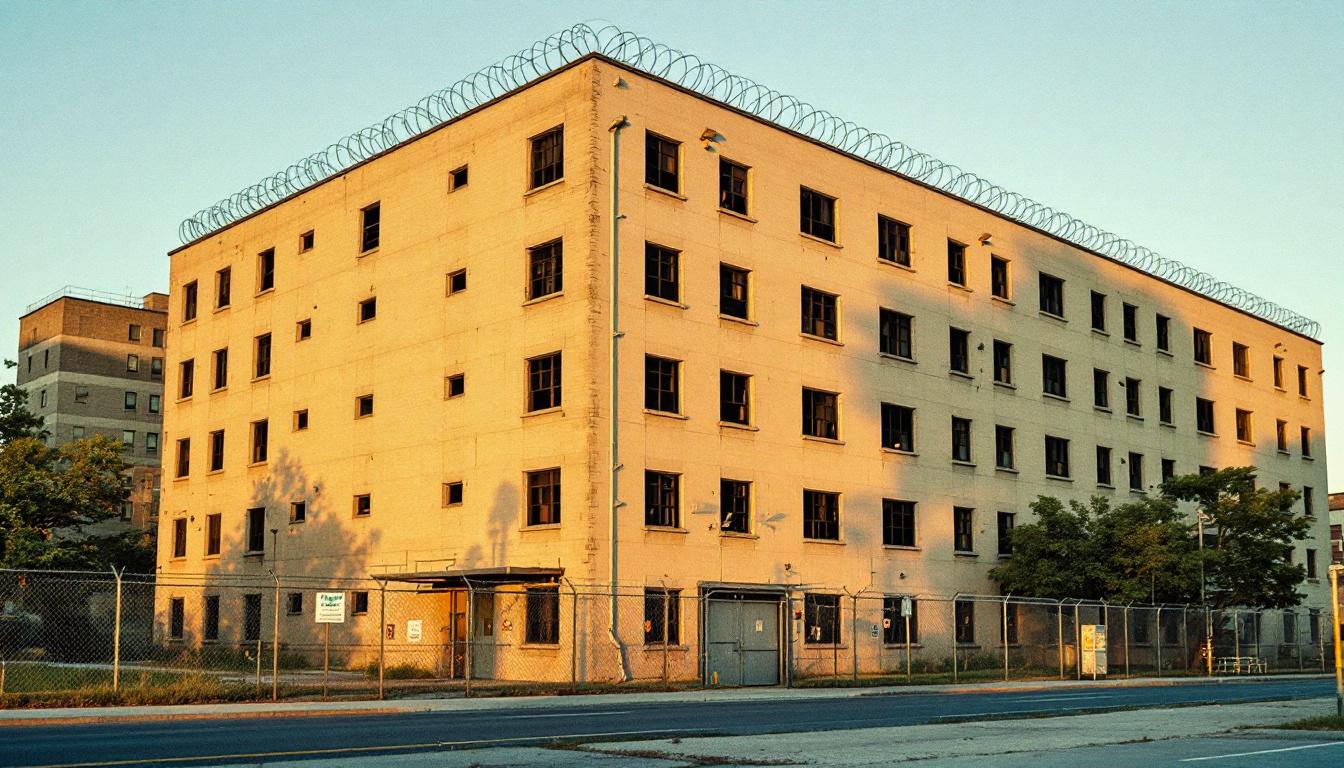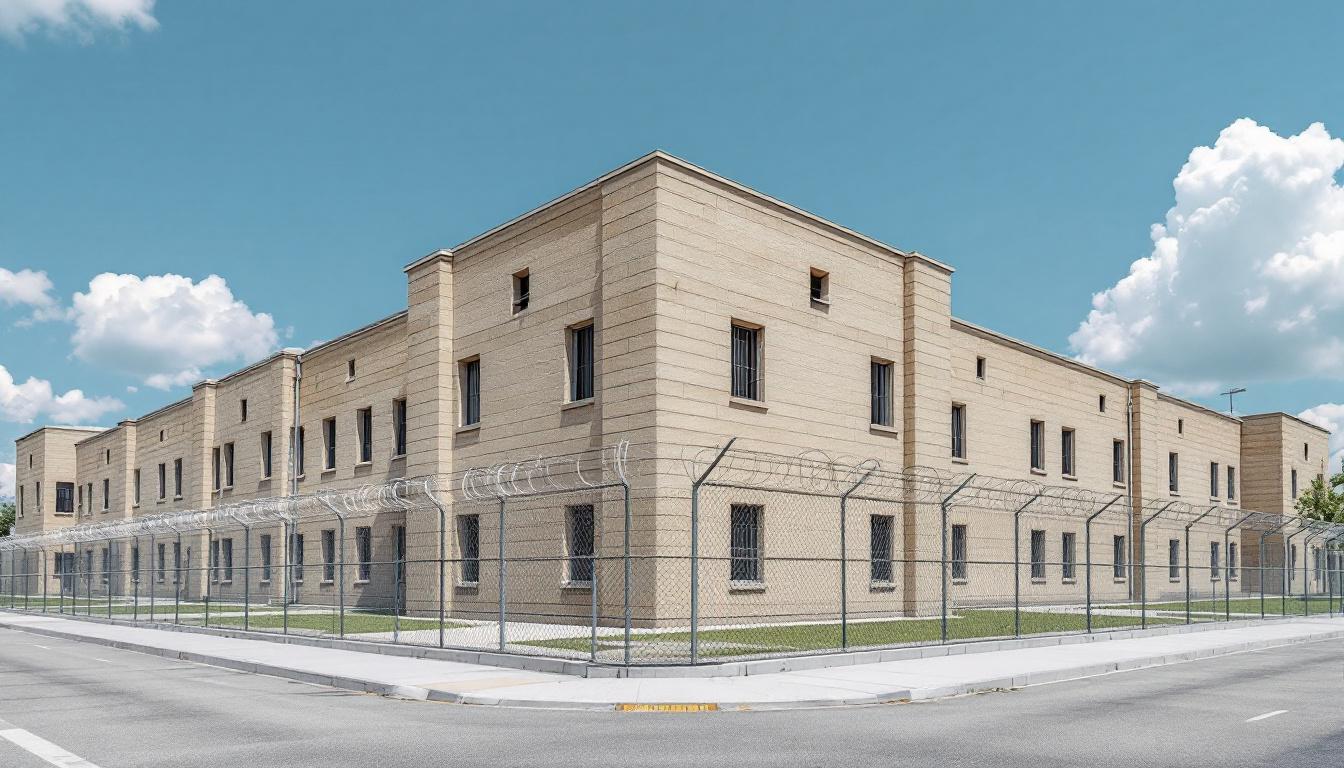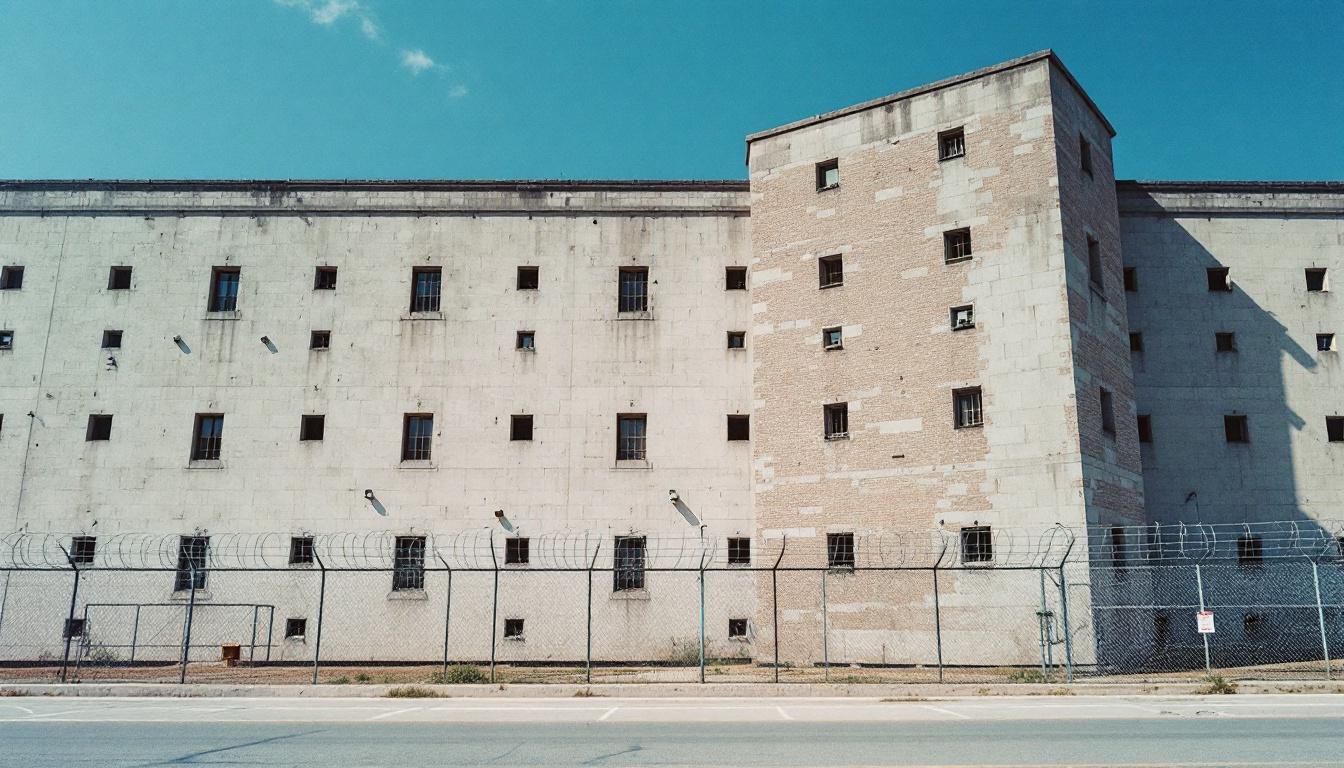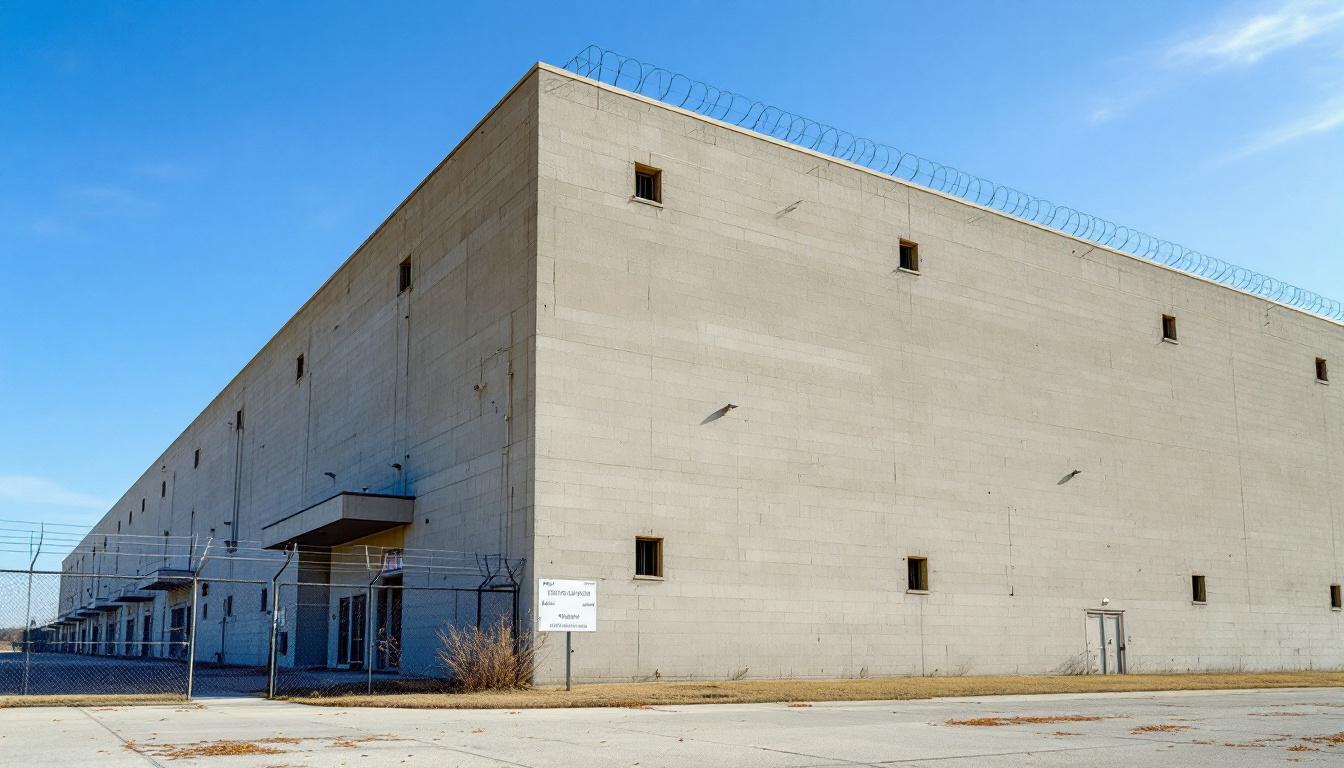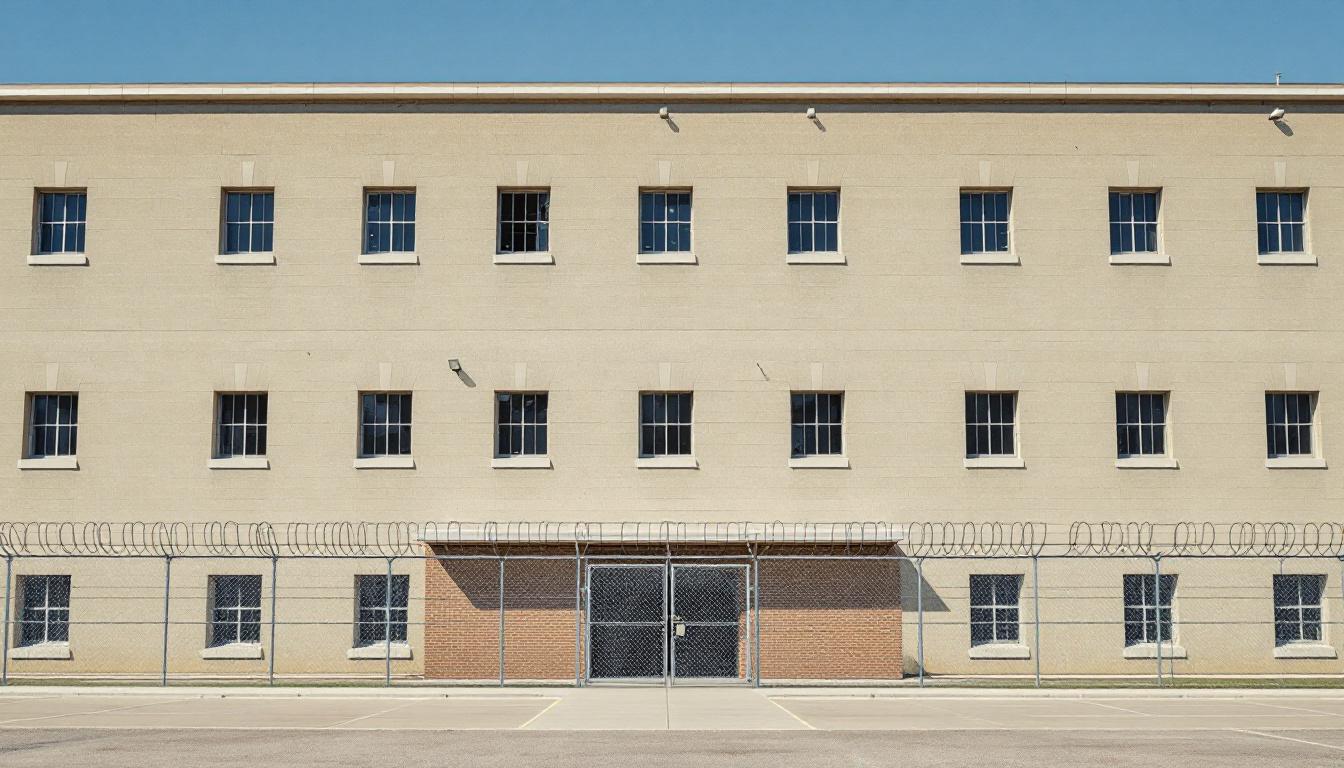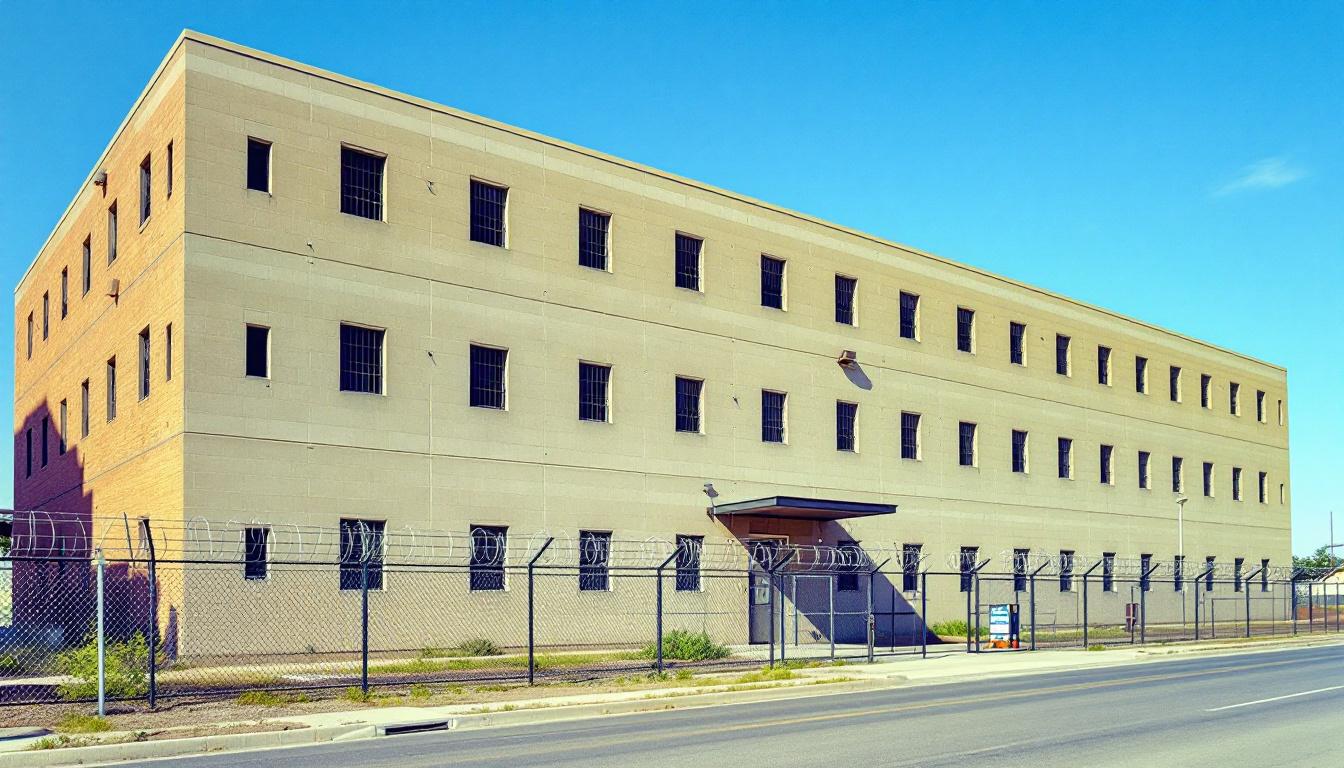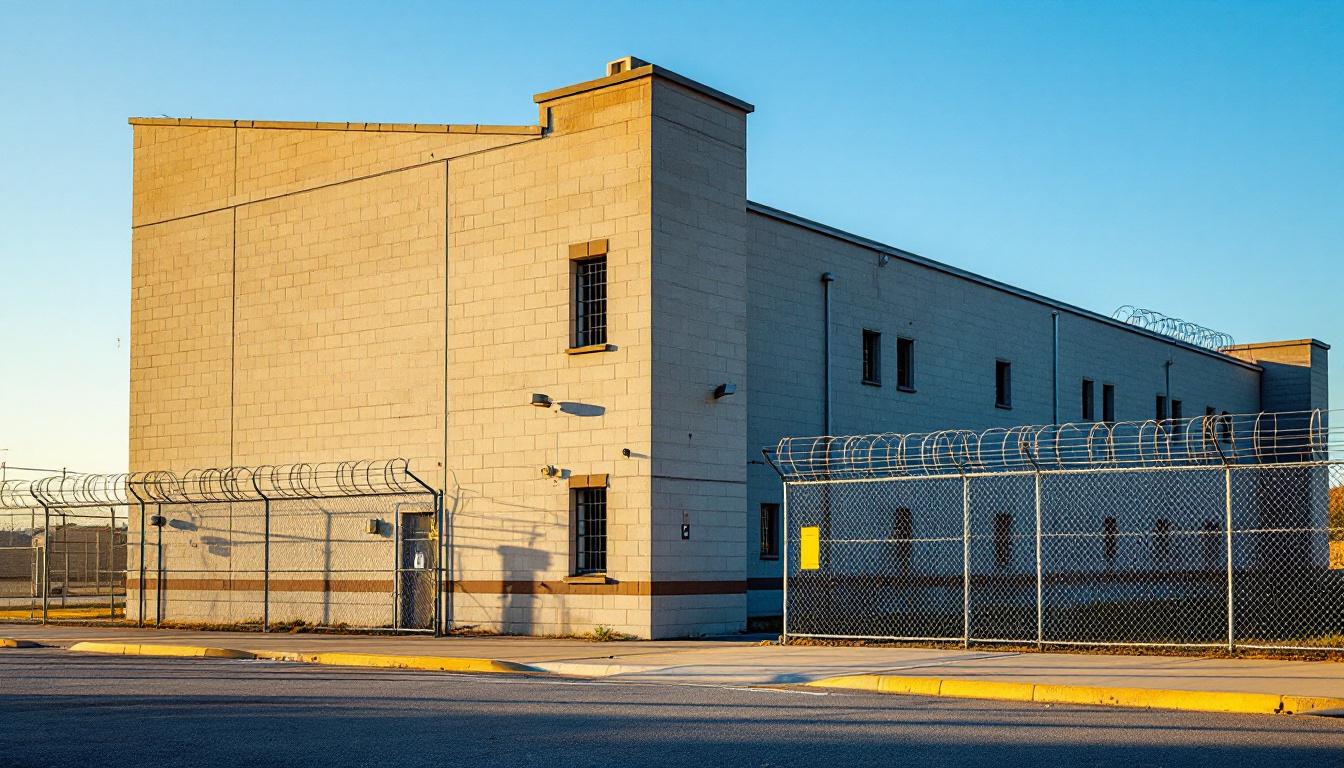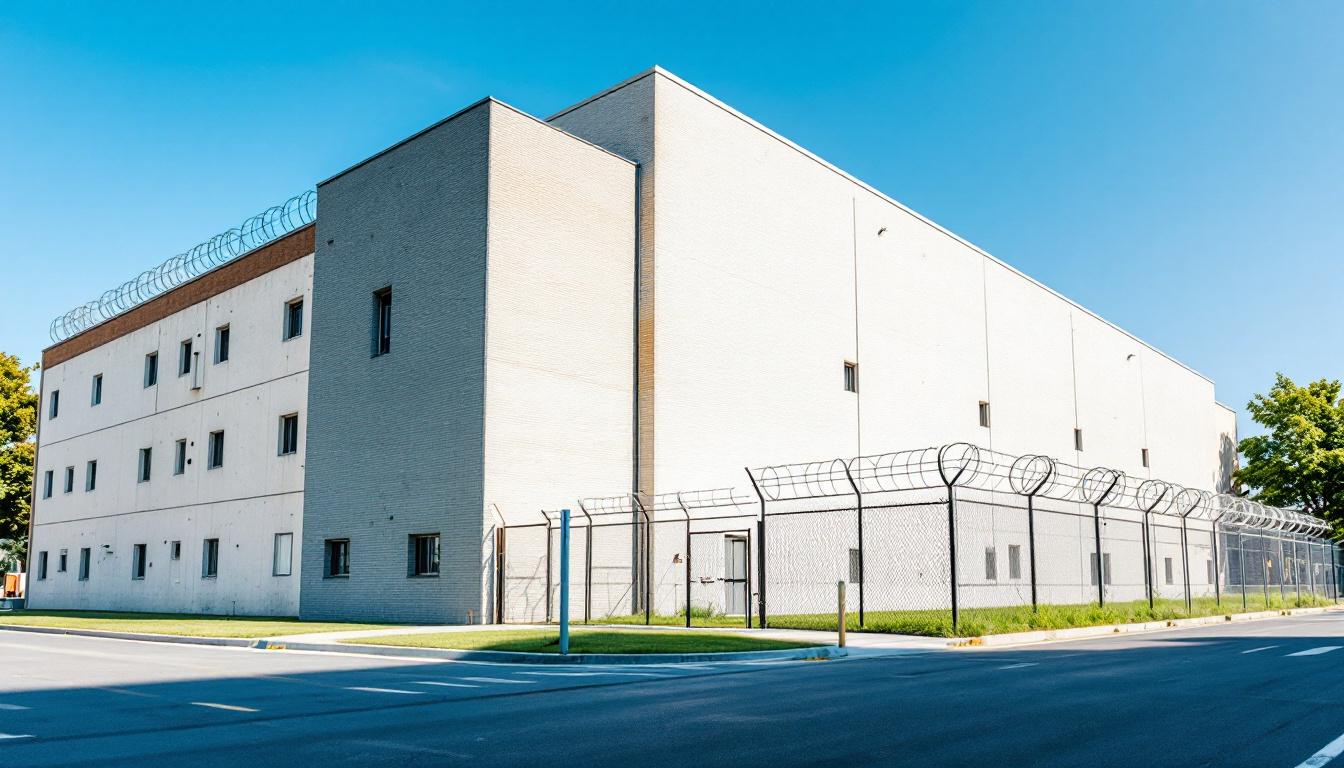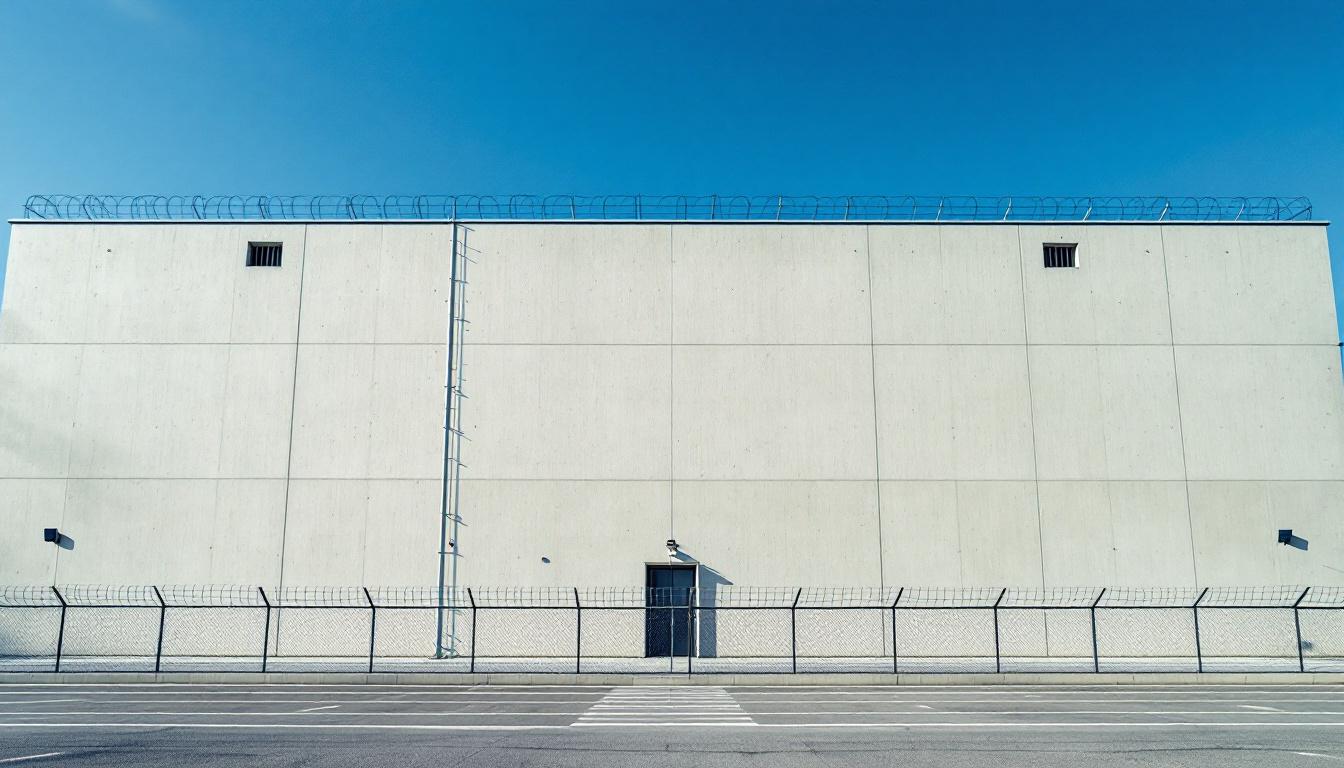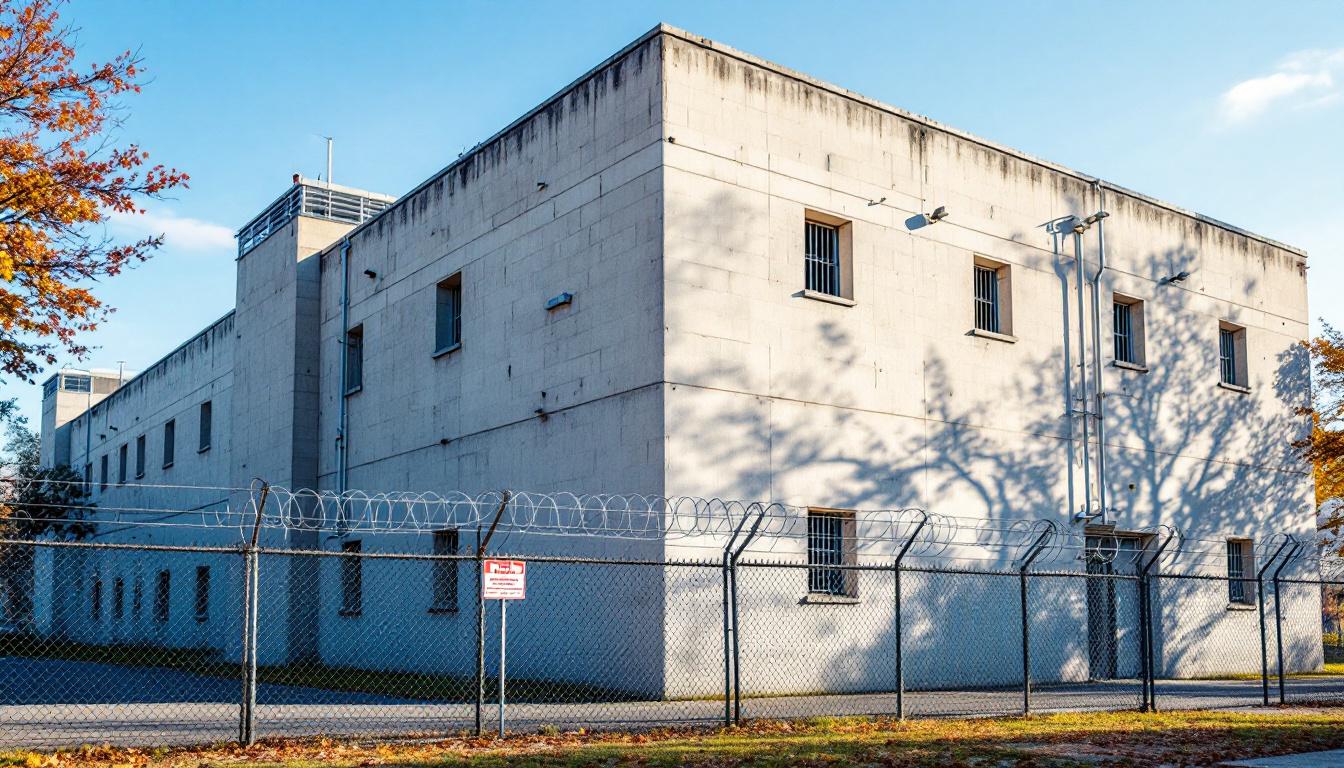
Quick Navigation
How to contact an inmate at Dr. Eddie Warrior Correctional Center
This comprehensive guide will walk you through how to connect with an inmate at Dr. Eddie Warrior Correctional Center. Follow the steps below to find an inmate and send letters and photos:
- Search for the inmate using our search tool below
- Create your account or log in to Penmate
- Write your message (up to 6,000 characters)
- Send instantly - inmates receive printed copies daily
Find an Inmate
Search for an inmate to start communicating today
Tip: You can search by first name, last name, or inmate ID number
To contact a person at Dr. Eddie Warrior Correctional Center start by searching for the person on the official facility website. Perform a search by following these steps:
- Step 1: Enter their first name and last name into the search form and click "Search"
- Step 2: Locate their inmate record
- Step 3: Write down their Inmate ID and any housing information provided
Important! Be sure to enter the person's full name. Nicknames should not be used.
How to Send Messages to Inmates

You can use your phone or computer to send emails, letters, and photos to an inmate. Messages are sent electronically to inmate tablets or kiosks at the facility. If you would like to send a message, start by searching for an inmate at Dr. Eddie Warrior Correctional Center.
Sending Photos and Postcards

A great way to send love and support to a loved one at Dr. Eddie Warrior Correctional Center is to send photos and postcards. It only takes a few minutes to send photos from your phone and it makes a huge difference. You can also mail postcards with words of support and inspiration, or design your own postcard for special moments like birthdays and holidays.
Important! Be sure not to send any explicit photos or they may not be approved by the facility. You can also use a photo printing app like Penmate to make sure your photos are printed at the correct size (4x6 or 3x5) and are mailed according to the rules and regulations of Dr. Eddie Warrior Correctional Center.
Frequently asked questions about Dr. Eddie Warrior Correctional Center
-
How long does it take to deliver a message?
If you're sending an email message your letter is usually delivered within 24-48 hours. For messages sent via mail you should expect delivery within 3-7 days. All messages will need be approved by Dr. Eddie Warrior Correctional Center.
-
How much does it cost to send a message to Dr. Eddie Warrior Correctional Center?
You can send a message free using your phone or mail a message via USPS for the price of a $0.60 stamp and envelope. You can also purchase credits or e-stamps from services starting at $1.99.
-
What services can I use to contact an inmate at Dr. Eddie Warrior Correctional Center?
Penmate
You can use Penmate to send letters and photos to an inmate from your phone. It's an easy way to stay in touch during your loved one's incarceration. Use the inmate locator to find an inmate's location and contact information, then you can send messages within a few minutes.
Securus messaging
Securus may be another option for communicating with an inmate at Dr. Eddie Warrior Correctional Center. You can create a friends and family account and purchase credits to send messages. All messages will be reviewed and must be approved by the facility.
JPay
Some county jails and state prisons may support sending messages with JPay. You must register an account with the system, find your loved one, and purchase stamps to send messages. For some locations you can also attach photos.
Smart Jail Mail
You may also check if Smart Jail Mail is available at Dr. Eddie Warrior Correctional Center. Smart Jail Mail is operated by Smart Communications and has contracted with some state and county jails. After purchasing credits, your messages and photos are sent to the facility, printed out, and then handed out to your loved one.
-
What is the mailing address of Dr. Eddie Warrior Correctional Center?
Mailing address:
Dr. Eddie Warrior Correctional Center
601 N Oak St
Taft, OK 74463
Phone: (918) 683-8365Business hours:
- Monday: Open 24 hours
- Tuesday: Open 24 hours
- Wednesday: Open 24 hours
- Thursday: Open 24 hours
- Friday: Open 24 hours
- Saturday: Open 24 hours
- Sunday: Open 24 hours
-
What are the visiting hours at Dr. Eddie Warrior Correctional Center?
Visiting hours at Dr. Eddie Warrior Correctional Center vary by housing unit and security level. Generally, visits are scheduled on weekends and holidays, with some facilities offering weekday visits. Contact the facility directly at (918) 683-8365 or check their website for the current visiting schedule. Visits typically last 30-60 minutes and must be scheduled in advance.
-
What items are prohibited when sending mail to Dr. Eddie Warrior Correctional Center?
Prohibited items typically include: cash, personal checks, stamps, stickers, glitter, glue, tape, staples, paperclips, polaroid photos, musical or blank greeting cards, hardcover books, magazines with staples, and any items containing metal or electronics. Only send letters on plain white paper with blue or black ink. Photos must be printed on regular photo paper (no Polaroids). Always check with Dr. Eddie Warrior Correctional Center for their specific mail policies.
-
How do I send money to an inmate at Dr. Eddie Warrior Correctional Center?
You can send money to an inmate at Dr. Eddie Warrior Correctional Center through several methods: 1) Online using JPay, Access Corrections, or the facility's approved vendor, 2) Money orders mailed directly to the facility with the inmate's name and ID number, 3) Kiosks located in the facility lobby, or 4) Over the phone using a credit or debit card. Fees vary by method, typically ranging from $2.95 to $11.95 per transaction.
-
Can I schedule a video visit with an inmate at Dr. Eddie Warrior Correctional Center?
Many facilities now offer video visitation as an alternative to in-person visits. At Dr. Eddie Warrior Correctional Center, video visits may be available through services like Penmate, Securus Video Connect, GTL, or ICSolutions. Video visits typically cost $10-20 for 20-30 minutes and must be scheduled in advance. You'll need a computer or smartphone with a camera and reliable internet connection. Contact the facility for their specific video visitation policies and approved vendors.
-
What identification do I need to visit an inmate at Dr. Eddie Warrior Correctional Center?
All visitors must present valid government-issued photo identification such as a driver's license, state ID, passport, or military ID. Minors must be accompanied by a parent or legal guardian who can provide the minor's birth certificate. Some facilities require visitors to be on the inmate's approved visitation list, which may require a background check. Contact Dr. Eddie Warrior Correctional Center for specific ID requirements and visitor approval procedures.
-
How can I find out an inmate's release date?
To find an inmate's release date at Dr. Eddie Warrior Correctional Center, you can: 1) Use the online inmate search tool if available, 2) Call the facility's records department, 3) Contact the inmate's case manager or counselor, or 4) Have the inmate provide this information during a call or visit. For privacy reasons, some facilities only release this information to immediate family members.
Facility Overview
Contact Information
Dr. Eddie Warrior Correctional Center601 N Oak St
Taft, OK 74463
Phone: (918) 683-8365
Official Website
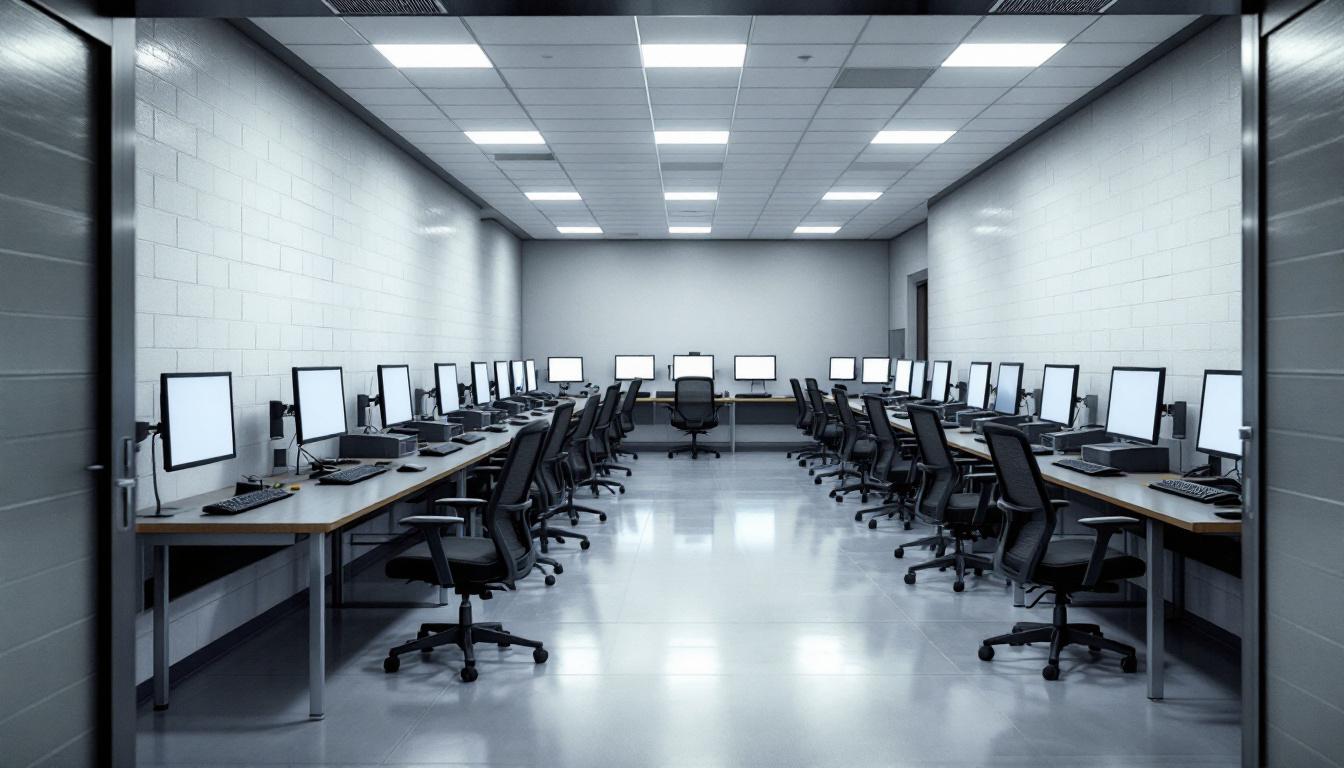
About Dr. Eddie Warrior Correctional Center
Nestled within the rural landscape of Dallas, Oklahoma, this correctional facility serves as a vital component in the state's commitment to transforming lives through structured rehabilitation and community reintegration. Eddie Warrior Corr. Center, OK operates with a clear focus on preparing residents for successful reentry into society, emphasizing evidence-based programming that addresses the root causes of criminal behavior while fostering personal accountability and growth.
The facility typically houses a diverse population of residents who benefit from comprehensive services designed to break cycles of recidivism and build sustainable pathways to productive citizenship. Educational opportunities often form the cornerstone of rehabilitation efforts, with programs that may include basic literacy instruction, GED preparation, and vocational training aligned with regional employment needs. Mental health and substance abuse treatment services frequently complement academic programming, recognizing that addressing underlying challenges is essential for lasting behavioral change and successful community reintegration.
Community partnerships play a crucial role in extending the facility's impact beyond its walls, as local organizations and faith-based groups often collaborate to provide mentorship, job placement assistance, and transitional support services. This OK correctional facility generally maintains connections with area employers, educational institutions, and social service agencies to create a network of support that residents can access both during incarceration and following release. Through this collaborative approach, the facility works to ensure that residents services extend seamlessly into the community, promoting long-term stability and reducing the likelihood of reoffending while strengthening the broader Dallas area through the successful reintegration of its former residents.
Programs & Services
Comprehensive rehabilitation initiatives at Eddie Warrior Correctional Center typically focus on addressing the diverse needs of residents through evidence-based programming and skill development opportunities. The facility's approach often emphasizes preparing individuals for successful community reintegration by providing structured pathways for personal growth, education, and practical skill acquisition. These initiatives may deliver services designed to address underlying factors that contribute to criminal behavior while building the foundation for productive citizenship.
Educational and vocational initiatives form the cornerstone of the facility's programming structure. Education programs typically include basic literacy instruction, GED preparation, and post-secondary educational opportunities that allow residents to advance their academic credentials. Civic education components may focus on teaching residents about their rights and responsibilities as community members, often incorporating lessons about democratic participation and legal processes. Moreover, vocational training initiatives often provide hands-on instruction in trades such as construction, automotive repair, food service, and maintenance skills that align with local employment opportunities upon release.
Support services and therapeutic initiatives complement the educational foundation through comprehensive wraparound programming. Faith-based programs typically offer spiritual guidance and moral development opportunities for residents seeking religious or spiritual growth during their incarceration. Transitional planning services may deliver individualized case management that addresses housing, employment, and family reunification needs as release dates approach. Moreover, volunteer programs often connect residents with community mentors and support networks, creating bridges between the correctional environment and the broader community that can provide ongoing assistance during the reentry process.
Daily Life & Visitation

Structure and routine form the backbone of daily operations, with residents following carefully planned schedules that currently provide predictability and stability. The facility continues to maintain consistent wake-up times, meal periods, and programming sessions that help residents adapt to institutional life. Count times occur regularly throughout the day, ensuring security while allowing residents to participate in various activities and responsibilities.
Housing arrangements typically place residents in dormitory-style units or cells, depending on their security classification and available space. Personal belongings are generally limited to approved items that residents may purchase through the commissary system or receive through approved channels. Meals are served in designated dining areas at scheduled times, with residents often assigned to specific seating arrangements. The dining experience delivers structure while providing opportunities for social interaction within established guidelines.
Moreover, recreational activities may include outdoor exercise periods, television viewing in common areas, and access to library services when available. Work assignments often involve kitchen duties, facility maintenance, or other institutional operations that help residents develop skills while contributing to daily operations. Visitation policies typically allow family members and approved visitors to maintain contact during designated hours, whereas phone privileges and written correspondence provide additional communication options. Programming schedules generally include educational opportunities, counseling sessions, and other structured activities designed to support rehabilitation goals and prepare residents for eventual reintegration into the community.
Ready to Connect?
Start communicating with your loved one today
Search for an Inmate
